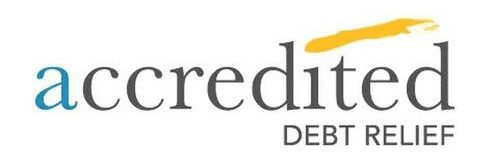A lien waiver is a legal document that releases the claim of a lien on a property. In construction projects or real estate transactions, lien releases and waivers are essential since they prevent disputes between contractors, suppliers, and property owners. However, it is also important to understand the differences between Debt Settlement vs Debt Consolidation when dealing with financial obligations related to property transactions. Most people lack a comprehensive understanding of lien waivers, which can lead to complications during property transactions. In this article, we will explore everything you need to know about lien waivers, while also discussing the options of debt settlement vs debt consolidation as potential strategies to navigate financial complexities associated with property transactions effectively.
By gaining knowledge of lien waivers and considering these alternatives, individuals involved in construction projects or real estate transactions can ensure smoother processes and better financial outcomes.
Types of Lien Waivers

There are two types of lien waivers: conditional and unconditional waivers. A conditional lien waiver is issued before the payment is made, and it is an agreement that the lien holder will release the lien once they receive their payment. On the other hand, an unconditional lien waiver is issued after the payment has been received, and it releases the lien holder’s right to file a lien against the property.
When to Use a Lien Waiver
Lien waivers are most commonly used in construction projects or real estate transactions. In construction projects, contractors and suppliers can file a lien on the property if they are not paid. A lien waiver can prevent this from happening by releasing the lien holder’s claim on the property once they receive payment. In real estate transactions, a lien waiver is used to release any claims on the property, ensuring that the buyer has a clear title. Service providers on payer’s property such as landscapers or pool cleaners can also use lien waivers to release any claims on the property once they are paid.
How to Obtain a Lien Waiver
Obtaining a lien waiver on progress payment involves requesting one from the lien holder. The request should be made in writing, and it should include the amount paid, the date of payment, and a description of the work or services provided. It is also critical to review the lien waiver before signing it to ensure that it is the correct type and that all information is accurate.
Common Mistakes with Lien Waivers
One common mistake people make with lien waivers is failing to obtain them. This mistake can lead to disputes and complications during property transactions. Another mistake is signing the wrong type of lien waiver forms. It is essential to understand the type of lien waiver required and ensure that it is the correct one before signing.
Legal Considerations

Each state has specific laws regarding lien waivers, and it is essential to understand these laws to avoid disputes. For instance, some states require that a lien waiver be notarized, while others do not. Understanding these laws can help prevent legal complications regulate lien waivers. Common disputes with lien waivers include signing a lien waiver without receiving payment or signing a lien waiver without reviewing it first.
Conclusion
In conclusion, lien waivers are essential in construction projects, real estate transactions, and service provider contracts. Understanding the types of lien waivers, when to use them, and how to obtain them can prevent disputes and complications. It is also critical to be aware of the legal considerations and common mistakes associated with lien waivers. By following these guidelines, you can ensure a smooth and mandatory lien waiver forms a successful property transaction.
Frequently Asked Questions

What is a lien waiver?
A lien waiver is a legal document that releases a property owner or contractor from any potential claims by subcontractors, suppliers, or laborers for non-payment.
Why do I need a lien waiver?
A lien waiver protects you from any future legal claims related to non-payment by subcontractors, suppliers, or laborers who have worked on your property.
Who should provide a lien waiver?
A lien waiver and release should be provided by any subcontractor, supplier, or laborer who has worked on your property and has been paid in full.
Are there different types of lien waivers?
Yes, there are two types of lien waivers: conditional lien waivers and unconditional lien waivers. A conditional lien waiver is issued before the payment is received, while an unconditional lien waiver is issued after specific date when the payment is received.
Can a lien waiver be revoked?
In most cases, written agreement for a lien waiver cannot be revoked once it has been signed and issued. However, certain circumstances may allow for a lien waiver to be revoked.
Is a lien waiver the same as a lien release?
No, a lien waiver is not the same as a lien release. A statutory lien waiver forms waives the right to file a lien, while a lien release cancels an existing lien.
What information should be included in a lien waiver?
A lien waiver document should include the name and address of the property owner, the name and address of the contractor or subcontractor, the amount paid, and a description of the work performed.
Can a lien waiver be contested?
Yes, a lien waiver process can be contested if it is found to be fraudulent or if the payment amount is disputed.
Is a lien waiver required by law?
In some states, a lien waiver on final payment is required by law before final payment can be made to a contractor or subcontractor.
How long is a lien waiver valid?
The validity of a lien waiver varies by state, but it typically remains valid for a certain period of time after the payment is received.
Glossary
- Lien: A legal claim on property as security for a debt or obligation.
- Waiver: A legal document that releases one party from liability or responsibility.
- Lien waiver: A legal document that releases a lien holder’s right to file a lien against a property.
- Conditional waiver: A lien waiver that is effective only if certain conditions are met.
- Unconditional waiver: A lien waiver that is effective immediately and without any conditions.
- Progress payment waiver: A lien waiver that releases the lien holder’s claim for payment for work completed up to a certain point.
- Final payment waiver: A lien waiver that releases the lien holder’s claim for payment for work completed in its entirety.
- Partial waiver: A lien waiver that releases the lien holder’s claim for a portion of the total amount owed.
- Full waiver: A lien waiver that releases the lien holder’s claim for the entire amount owed.
- Statutory waiver: A lien waiver that is prescribed by law and must be used in accordance with specific regulations.
- Mechanic’s lien: A lien that is placed on a property by a contractor or supplier who has not been paid for work or materials.
- General contractor: The main contractor responsible for overseeing a construction project and hiring subcontractors.
- Subcontractor: A contractor hired by the general contractor to perform a specific task or portion of a project.
- Owner: The person or entity that owns the property on which work is being performed.
- Title company: A company that ensures the transfer of ownership of property and handles all legal documentation related to a real estate transaction.
- Escrow agent: A neutral third party that holds funds and legal documents related to a real estate transaction until all conditions are met.
- Release of lien: A legal document that releases a lien from a property once the debt or obligation has been satisfied.
- Notice of completion: A legal document that signals the end of a construction project and serves as notice to all parties involved.
- Notice of cessation: A legal document that signals the cessation of work on a construction project and serves as notice to all parties involved.
- Payment bond: A bond that guarantees payment to subcontractors and suppliers in the event that the contractor defaults on payment.










